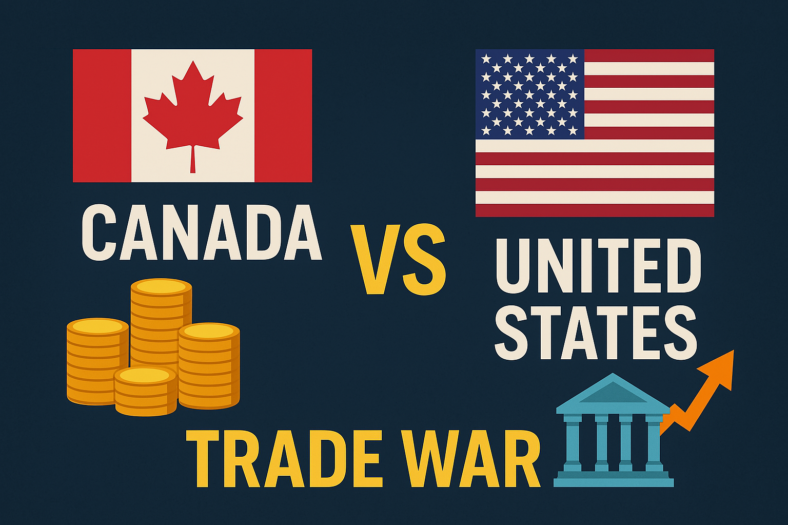In Canada, business loans are available from a range of financial institutions, including major banks, credit unions, online lenders, and government programs. Each type of lender and loan product has unique features, benefits, and eligibility requirements. Therefore, it is essential for business owners to thoroughly research and compare these options to identify the most suitable loan for their specific needs.
This guide will provide an in-depth look at the best business loan options available in Canada, highlighting their key features, advantages, and potential drawbacks. Whether you are looking to finance a startup, expand an existing business, or manage cash flow, understanding the landscape of business loans in Canada will help you make informed decisions and secure the funding necessary to achieve your business goals.
Best Business Loans in Canada – Our Top Picks
Pros and cons of business loans
Business loans can be a powerful tool for growth and stability, but they also come with their own set of advantages and disadvantages. Understanding these can help business owners make informed decisions about whether a business loan is the right choice for their financial needs.
Pros of Business Loans
Access to Capital:
- Immediate Funds: Business loans provide immediate access to capital that can be used for various purposes such as expansion, inventory purchase, or cash flow management.
- Growth Opportunities: The infusion of capital can help businesses seize growth opportunities, enter new markets, or invest in new products and services.
Flexible Use:
- Versatility: Funds from business loans can be used for a wide range of business needs, from operational costs to major investments.
- Customization: Many lenders offer different loan products that can be tailored to fit specific business requirements, providing flexibility in terms and repayment schedules.
Building Credit:
- Credit Improvement: Timely repayments on a business loan can help improve the business’s credit rating, making it easier to secure future financing.
- Reputation: Successfully managing a business loan can enhance the business’s credibility with lenders and investors.
Ownership Retention:
- No Equity Dilution: Unlike equity financing, business loans do not require giving up ownership stakes, allowing business owners to retain full control over their company.
Tax Benefits:
- Interest Deduction: Interest paid on business loans is often tax-deductible, which can reduce the overall cost of the loan and benefit the business financially.
Cons of Business Loans
Debt Obligation:
- Repayment Pressure: The obligation to repay the loan with interest can create financial pressure, especially if the business faces cash flow challenges or revenue fluctuations.
- Fixed Payments: Monthly loan repayments are typically fixed, which can be difficult to manage during periods of low revenue.
Interest Costs:
- High Costs: Depending on the loan terms and the borrower’s credit profile, interest rates can be high, increasing the overall cost of the loan.
- Variable Rates: For loans with variable interest rates, monthly payments can increase if interest rates rise, creating financial unpredictability.
Collateral Requirements:
- Risk of Asset Loss: Many business loans require collateral, which puts business assets at risk. If the loan is not repaid, the lender can seize the collateral, potentially jeopardizing the business’s operations.
- Limited Access: Startups or businesses with insufficient collateral may find it challenging to qualify for secured loans.
Eligibility and Approval:
- Strict Criteria: Lenders often have stringent eligibility criteria, including strong credit scores and robust financial histories. Not all businesses can meet these requirements.
- Lengthy Process: The loan application process can be time-consuming and requires extensive documentation, which can delay access to funds.
Impact on Cash Flow:
- Repayment Strain: Regular loan repayments can strain the business’s cash flow, especially during economic downturns or slow business periods.
- Operational Constraints: Businesses may need to adjust their operations to ensure they can meet repayment obligations, which can limit financial flexibility.
By weighing these pros and cons, business owners can better determine whether a business loan is the appropriate financing option for their specific needs and circumstances. This careful consideration is crucial for making informed financial decisions that support the business’s long-term growth and stability.
Types business loans available in Canada
In Canada, various types of business loans are available to meet the diverse financial needs of entrepreneurs and business owners. These loans are offered by traditional banks, credit unions, online lenders, and government programs. Here are some common types of business loans available in Canada:
Term Loans:
- Description: Term loans provide businesses with a lump sum of money upfront, which is repaid over a specified period with interest.
- Purpose: Term loans are suitable for financing long-term investments such as purchasing equipment, real estate, or funding major expansions.
- Features: Fixed or variable interest rates, set repayment schedules, and may require collateral.
Lines of Credit:
- Description: Business lines of credit offer flexible access to funds up to a predetermined limit, which can be drawn upon as needed.
- Purpose: Lines of credit are ideal for managing cash flow fluctuations, covering short-term operational expenses, or seizing immediate business opportunities.
- Features: Interest is charged only on the amount borrowed, and repayments are flexible, allowing businesses to borrow and repay funds as needed.
Equipment Financing:
- Description: Equipment financing provides loans specifically for purchasing business equipment, with the equipment itself often serving as collateral.
- Purpose: This type of loan is essential for businesses needing to acquire machinery, vehicles, or other equipment necessary for operations.
- Features: Loan terms are tailored to match the equipment’s lifespan, and the equipment itself acts as security for the loan.
Invoice Financing:
- Description: Invoice financing, also known as accounts receivable financing, allows businesses to borrow against their outstanding invoices.
- Purpose: It provides immediate cash flow by converting unpaid invoices into working capital, helping businesses maintain liquidity while waiting for customers to pay.
- Features: Businesses receive a percentage of the invoice amount upfront, with the remainder (minus fees) paid when the customer settles the invoice.
Merchant Cash Advances:
- Description: Merchant cash advances provide upfront capital in exchange for a percentage of future credit card sales.
- Purpose: This type of financing is suitable for businesses with high credit card transaction volumes, offering quick access to funds without a lengthy approval process.
- Features: Repayments are made automatically through a percentage of daily credit card sales, with repayment amounts fluctuating based on business revenue.
Government Loans and Grants:
- Description: The Canadian government offers various loan and grant programs to support businesses, especially in specific sectors or regions.
- Purpose: These programs aim to stimulate economic growth, create jobs, and support innovation by providing financial assistance to eligible businesses.
- Features: Government loans may offer favorable terms such as lower interest rates, longer repayment periods, or reduced collateral requirements compared to traditional loans.
These are some of the primary types of business loans available in Canada. Each type serves different purposes and comes with its own set of terms, conditions, and eligibility criteria. Understanding these options can help businesses choose the most suitable financing solution to support their growth and success.
How to find the best business loans in Canada
Finding the best business loans in Canada involves thorough research, comparison, and evaluation of various loan options offered by different lenders. Here’s a step-by-step guide on how to find the best business loans in Canada:
Assess Your Business Needs:
- Determine the specific purpose for which you need financing, whether it’s starting a new business, expanding operations, purchasing equipment, managing cash flow, or funding a specific project.
Evaluate Your Financial Situation:
- Review your business’s financial health, including cash flow, revenue projections, credit history, and existing debt obligations. Understand how much you can afford to borrow and repay comfortably.
Research Lenders:
- Explore the different types of lenders offering business loans in Canada, including traditional banks, credit unions, online lenders, and government programs. Research their reputation, interest rates, fees, loan terms, and eligibility requirements.
Compare Loan Options:
- Request quotes or pre-qualify for loans from multiple lenders to compare their offerings. Pay attention to factors such as interest rates, loan amounts, repayment terms, collateral requirements, and any additional fees or charges.
Consider Government Programs:
- Explore government-backed loan programs and grants available to businesses in Canada. These programs often offer favorable terms, lower interest rates, and support for specific industries or regions.
Read Reviews and Testimonials:
- Look for reviews and testimonials from other businesses that have borrowed from the lenders you’re considering. Pay attention to feedback on customer service, transparency, and overall satisfaction with the loan process.
Seek Professional Advice:
- Consider consulting with financial advisors, accountants, or business consultants who can provide expert guidance on choosing the right business loan for your needs. They can help you understand the terms and assess the potential impact on your business.
Negotiate Terms:
- Don’t hesitate to negotiate with lenders to secure the most favorable terms for your business. This may include negotiating interest rates, repayment schedules, loan amounts, or collateral requirements.
Review the Fine Print:
- Carefully review all loan documents, including the loan agreement and disclosure statements, to understand the terms and conditions, including interest rates, fees, penalties, and repayment obligations.
Make an Informed Decision:
- Based on your research and evaluations, choose the business loan option that best meets your needs, offers favorable terms, and aligns with your financial goals and capabilities.
Apply for the Loan:
- Once you’ve selected a lender and loan option, complete the loan application process according to the lender’s requirements. Provide all necessary documentation and information accurately to expedite the approval process.
By following these steps and conducting thorough research, you can find the best business loans in Canada that meet your financial needs and support the growth and success of your business.
How to apply for a business loan in Canada
Applying for a business loan in Canada involves several steps to ensure a smooth and successful process. Here’s a comprehensive guide on how to apply for a business loan in Canada:
Prepare Your Documentation:
- Gather all necessary documentation required for the loan application. This typically includes:
- Business plan outlining your business model, market analysis, and financial projections.
- Financial statements such as balance sheets, income statements, and cash flow statements.
- Personal and business tax returns for the past few years.
- Legal documents such as business registration, licenses, and partnership agreements.
- Collateral documentation (if applicable), such as property deeds or equipment titles.
- Gather all necessary documentation required for the loan application. This typically includes:
Assess Your Eligibility:
- Review the eligibility criteria of the lender or lending institution you plan to apply to. This may include factors such as credit score, time in business, revenue, and industry type.
Research Lenders:
- Explore different lenders offering business loans in Canada, including traditional banks, credit unions, online lenders, and government programs. Research their loan products, interest rates, fees, and reputation.
Select the Right Loan Product:
- Choose the loan product that best fits your business needs, taking into consideration factors such as loan amount, interest rate, repayment term, and flexibility.
Prepare Your Loan Application:
- Complete the loan application form provided by the lender. Provide accurate and detailed information about your business, financial history, and loan requirements.
Submit Your Application:
- Submit your loan application to the chosen lender, either online or in person, depending on their application process. Ensure that all required documentation is included with your application to avoid delays.
Undergo the Underwriting Process:
- Once your application is submitted, the lender will review your documentation and assess your creditworthiness. This may involve a thorough review of your financial statements, credit history, and business plan.
Provide Additional Information:
- Be prepared to provide additional information or clarification if requested by the lender during the underwriting process. Promptly respond to any inquiries to expedite the application review.
Receive Loan Approval:
- If your loan application is approved, carefully review the loan terms and conditions provided by the lender. Ensure that you understand all aspects of the loan agreement before proceeding.
Sign the Loan Agreement:
- Sign the loan agreement document, acknowledging your acceptance of the terms and conditions outlined by the lender. Review the agreement carefully to confirm that it aligns with your expectations and financial needs.
Receive Loan Disbursement:
- Once the loan agreement is signed, the lender will disburse the loan funds to your business account. Use the funds for the intended purpose outlined in your loan application.
Manage Loan Repayments:
- Make timely repayments according to the terms of the loan agreement. Set up automatic payments if available to ensure that payments are made on time and avoid late fees or penalties.
By following these steps and being well-prepared throughout the process, you can increase your chances of successfully applying for a business loan in Canada and securing the financing your business needs to thrive.
Common fees and costs for business loans
When obtaining a business loan in Canada, it’s essential to consider the various fees and costs associated with borrowing. These fees can significantly impact the total cost of the loan and affect the overall financial health of your business. Here are some common fees and costs associated with business loans:
Interest Rate:
- Interest is the primary cost of borrowing money and is typically expressed as an annual percentage rate (APR). The interest rate can be fixed or variable and varies depending on factors such as the lender’s risk assessment, prevailing market rates, and the borrower’s creditworthiness.
Origination Fee:
- An origination fee, also known as an application fee or processing fee, is charged by the lender to cover the costs associated with processing the loan application. This fee is typically a percentage of the loan amount and is often deducted from the loan proceeds.
Administration Fee:
- Some lenders may charge an administration fee to cover administrative costs associated with servicing the loan. This fee is usually a one-time charge and may be included in the loan agreement.
Closing Costs:
- Closing costs are fees associated with finalizing the loan transaction and may include legal fees, appraisal fees, and title search fees. These costs can vary depending on the complexity of the loan and the lender’s requirements.
Prepayment Penalty:
- A prepayment penalty is a fee charged by the lender if the borrower pays off the loan before the end of the loan term. This fee compensates the lender for the interest income they would have earned if the loan had been paid according to the original schedule.
Late Payment Fees:
- Late payment fees are charged by the lender if the borrower fails to make a scheduled loan payment on time. These fees are typically a percentage of the overdue amount or a flat fee and can accumulate over time if payments continue to be missed.
Annual Fees:
- Some lenders may charge an annual fee for maintaining the business loan account. This fee is typically assessed annually and may be based on factors such as the loan balance or credit limit.
Insurance Premiums:
- Lenders may require borrowers to purchase loan insurance, such as life insurance or disability insurance, to protect against default. The cost of insurance premiums varies depending on factors such as the borrower’s age, health, and coverage amount.
Underwriting Fees:
- Underwriting fees are charged by the lender to cover the costs associated with evaluating and approving the loan application. These fees may be charged upfront or incorporated into the loan’s interest rate or closing costs.
Brokerage Fees:
- If you use a broker to help you find a business loan, you may be required to pay brokerage fees. These fees compensate the broker for their services and expertise in connecting you with suitable lenders.
It’s important to carefully review and understand all fees and costs associated with a business loan before agreeing to the loan terms. By understanding these fees upfront, you can accurately assess the total cost of borrowing and make informed decisions that align with your business’s financial objectives.
Business loans vs personal loans
Business loans and personal loans serve different purposes and are designed to meet distinct financial needs. Understanding the differences between the two can help individuals make informed decisions about which type of loan is most appropriate for their specific circumstances. Here’s a comparison between business loans and personal loans:
Business Loans
Purpose:
- Business loans are specifically intended to finance business-related expenses, such as starting a new business, expanding operations, purchasing equipment, managing cash flow, or funding specific projects.
Borrower:
- Business loans are obtained by business entities, such as sole proprietorships, partnerships, corporations, or LLCs. The loan is typically based on the business’s creditworthiness and financial history rather than the individual borrower’s credit.
Application Process:
- The application process for a business loan typically requires providing detailed documentation about the business, including business plans, financial statements, tax returns, and details about the intended use of funds.
Loan Terms:
- Business loans may offer longer repayment terms and higher loan amounts compared to personal loans. The terms and conditions of the loan are often tailored to meet the specific needs of the business.
Interest Rates:
- Interest rates on business loans may be higher or lower than personal loan rates, depending on factors such as the borrower’s creditworthiness, the lender’s risk assessment, and prevailing market conditions.
Collateral:
- Business loans may require collateral, such as business assets, real estate, equipment, or inventory, to secure the loan. Collateral provides assurance to the lender and may result in lower interest rates or higher loan amounts.
Personal Loans
Purpose:
- Personal loans are intended for personal use and can be used for a variety of purposes, including debt consolidation, home improvements, medical expenses, vacations, or major purchases.
Borrower:
- Personal loans are obtained by individuals based on their personal credit history and financial standing. The loan is not tied to a specific business entity and can be used at the borrower’s discretion.
Application Process:
- The application process for a personal loan typically requires providing personal information, including proof of income, employment history, credit score, and details about existing debts and expenses.
Loan Terms:
- Personal loans may offer shorter repayment terms and lower loan amounts compared to business loans. The terms and conditions of the loan are generally standardized and less customizable than business loans.
Interest Rates:
- Interest rates on personal loans may vary depending on the borrower’s credit score, income level, and other factors. Personal loan rates may be higher or lower than business loan rates, depending on the lender and market conditions.
Collateral:
- Personal loans may be unsecured, meaning they do not require collateral. However, some lenders may offer secured personal loans that require collateral, such as a vehicle or savings account, to secure the loan and obtain more favorable terms.
In summary, business loans and personal loans serve different purposes and cater to different types of borrowers. Business loans are intended for business-related expenses and are obtained by business entities, while personal loans are for personal use and obtained by individuals. Understanding the distinctions between these two types of loans can help borrowers choose the most suitable financing option for their needs.
Alternatives to business loans
When traditional business loans aren’t feasible or preferred, there are several alternative financing options available to entrepreneurs and business owners. These alternatives offer flexibility and can cater to different financial needs and circumstances. Here are some alternatives to traditional business loans:
Business Line of Credit:
- Similar to a credit card, a business line of credit provides access to funds that can be drawn upon as needed. Interest is only charged on the amount borrowed, offering flexibility for managing cash flow and covering short-term expenses.
Business Credit Cards:
- Business credit cards offer a revolving line of credit that can be used for business expenses, such as purchasing inventory, paying suppliers, or covering day-to-day expenses. Many business credit cards offer rewards programs and benefits tailored to business needs.
Invoice Financing:
- Invoice financing, also known as accounts receivable financing, allows businesses to borrow against unpaid invoices. This provides immediate cash flow while waiting for customers to pay, helping to bridge gaps in working capital.
Merchant Cash Advances:
- Merchant cash advances provide upfront capital in exchange for a percentage of future credit card sales. This option is suitable for businesses with consistent credit card sales volume, offering quick access to funds without a lengthy approval process.
Equipment Financing:
- Equipment financing allows businesses to purchase equipment or machinery with the equipment itself serving as collateral. This option is ideal for businesses needing to acquire essential equipment without tying up working capital.
Crowdfunding:
- Crowdfunding platforms allow businesses to raise capital by soliciting small contributions from a large number of individuals or investors. This option is suitable for startups, product launches, or creative projects seeking community support.
Venture Capital:
- Venture capital involves raising capital from investors in exchange for equity in the business. Venture capitalists provide funding to high-growth startups with the potential for significant returns on investment.
Angel Investors:
- Angel investors are affluent individuals who provide funding to startups and early-stage businesses in exchange for equity or convertible debt. Angel investors often offer mentorship and strategic guidance in addition to capital.
Peer-to-Peer Lending:
- Peer-to-peer lending platforms connect individual investors with borrowers, bypassing traditional financial institutions. Borrowers receive funding from multiple investors, often at competitive interest rates.
Small Business Grants:
- Government agencies, nonprofit organizations, and private foundations offer grants to support small businesses, particularly those in specific industries or regions. Unlike loans, grants do not need to be repaid but often have strict eligibility criteria and application requirements.
Revenue-Based Financing:
- Revenue-based financing provides funding to businesses in exchange for a percentage of future revenue. Repayments are based on a percentage of the business’s monthly revenue, making it a flexible option for businesses with fluctuating income.
Bootstrapping:
- Bootstrapping involves self-funding the business using personal savings, revenue generated from sales, or profits reinvested back into the business. While it requires careful financial management, bootstrapping allows businesses to maintain full ownership and control without taking on debt or giving up equity.
Each of these alternatives to traditional business loans offers unique benefits and considerations. Entrepreneurs and business owners should carefully evaluate their options and choose the financing solution that best aligns with their business goals, financial needs, and risk tolerance.
FAQs about the best business loans in Canada
In Canada, various types of business loans are available, including term loans, lines of credit, equipment financing, invoice financing, merchant cash advances, and loans backed by government programs.
Assess your business’s financial needs, creditworthiness, and repayment capacity. Compare loan options from different lenders, considering factors such as interest rates, loan terms, fees, and eligibility requirements.
Eligibility criteria vary depending on the lender and the type of loan. Generally, lenders consider factors such as credit score, time in business, revenue, industry type, and collateral.
Maintain a strong credit profile, prepare a detailed business plan, have organized financial statements, demonstrate steady revenue streams, and consider offering collateral to secure the loan.
Required documents typically include business plans, financial statements (such as balance sheets and income statements), tax returns, proof of ownership, and details about the intended use of funds.
The approval process can vary depending on the lender, loan type, and complexity of the application. Some lenders offer quick approval decisions, while others may take longer to review applications.
Interest rates vary depending on factors such as the lender’s risk assessment, prevailing market rates, loan type, and the borrower’s creditworthiness. Rates can be fixed or variable.
Yes, the Canadian government offers various loan programs and grants to support small businesses, particularly in specific sectors or regions. These programs often provide favorable terms and financial assistance.
Common fees and costs associated with business loans include origination fees, administration fees, closing costs, prepayment penalties, late payment fees, annual fees, and insurance premiums.
Research different lenders, compare loan options, read reviews, consider government programs, seek professional advice, and carefully review loan terms and conditions before making a decision.
In conclusion, securing the best business loan in Canada is a crucial step for entrepreneurs and business owners looking to fuel growth, expand operations, or navigate financial challenges. With a diverse range of loan options available from traditional banks, credit unions, online lenders, and government programs, businesses have the opportunity to find financing solutions tailored to their specific needs.
By thoroughly researching and comparing loan options, considering factors such as interest rates, loan terms, fees, eligibility criteria, and repayment flexibility, businesses can make informed decisions that align with their financial objectives and long-term goals. Additionally, maintaining a strong credit profile, preparing detailed documentation, and seeking professional advice can improve the chances of loan approval and secure more favorable terms.
It’s essential for businesses to carefully review all loan terms and conditions, including fees and costs, to ensure transparency and avoid any surprises throughout the loan repayment process. By choosing the right business loan and effectively managing financial resources, businesses can position themselves for success and achieve their growth aspirations in the dynamic landscape of the Canadian business environment.




















